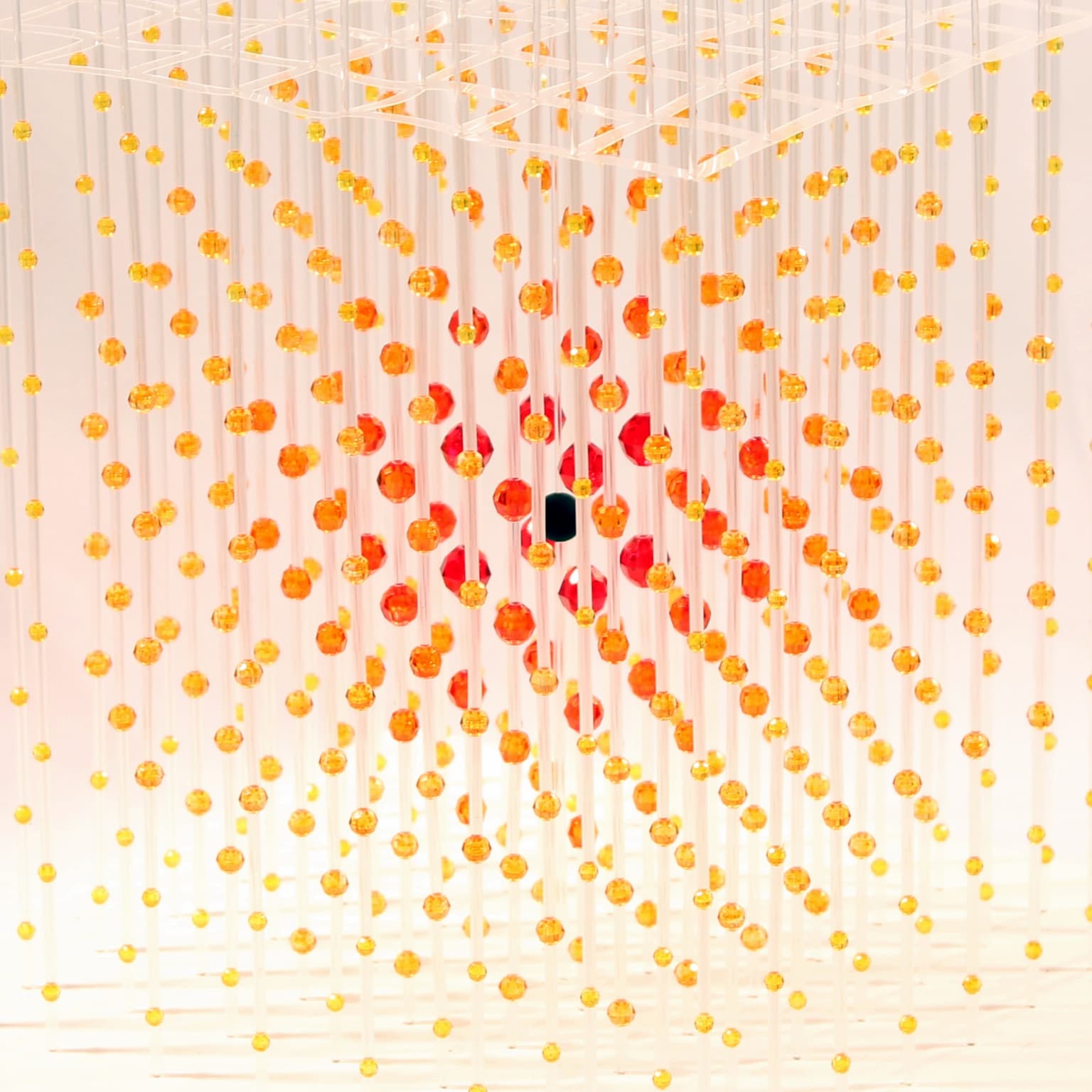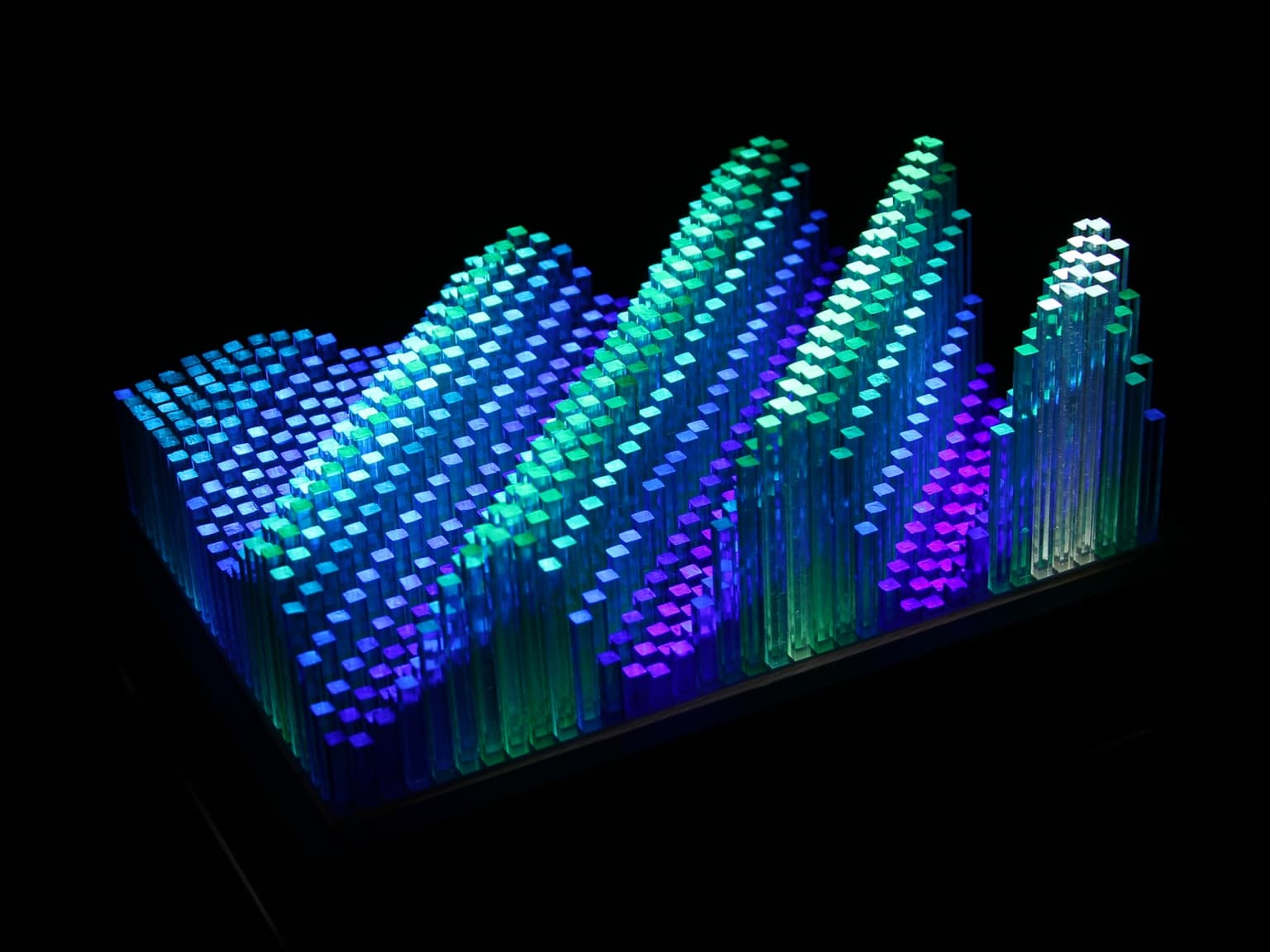Caroline Bowen
Artists
Caroline Bowen
Artist
Hypotenuse Studios
Louisville, Tennessee, USA
Statement
I graduated from the University of Tennessee, Knoxville, in 2016 with my bachelors in math and academic physics and a minor in studio art. Presently I live on a tree farm in rural eastern Tennessee, working part time in a machine shop while pursuing a professional career as a sculptor specializing in artistic math and physics visualizations.
Artworks

Point Source
30 x 29 x 29 cm
Acrylic beads, acrylic rod, plastic straws, illustration marker ink, wood, house paint, spray paint, mylar plastic film
2018
An illustration of how an arbitrary scalar value changes in 3D space with distance from a point source. For example, if the black bead at the center were a heat source, the colored beads depict the way temperature would vary with distance. This mathematic scenario arises frequently in nature: the intensity of light about a light source, the electrostatic field about a charged point, the gravitational pull about a massive object, and so on. Clear acrylic beads of varying sizes were dyed with illustration marker refill ink. These were then mounted on acrylic rods inserted into a wooden base, separated by clear plastic cocktail straws cut to precise lengths using a model railroad chopper.

Damped Wave
21 x 17 x 12 cm
Acrylic rod, illustration marker ink, 3D printed PLA, LED modules
2019
A damped surface wave illustrated using a sculptural technique inspired by 2D Riemann sums, where the individual rods serve as approximations to the height of the surface wave above each point in the xy-plane. As the wave progresses from one corner to the other, it begins to lose amplitude and over time levels out to equilibrium. Square acrylic rods were cut to precise lengths using a model railroad chopper, then dyed using illustration marker refill ink and hammered with a rubber mallet into place in a 3D printed base modeled using OpenSCAD. This rod base was then inserted into another 3D printed base that serves as a housing for the LED backlight and wiring.